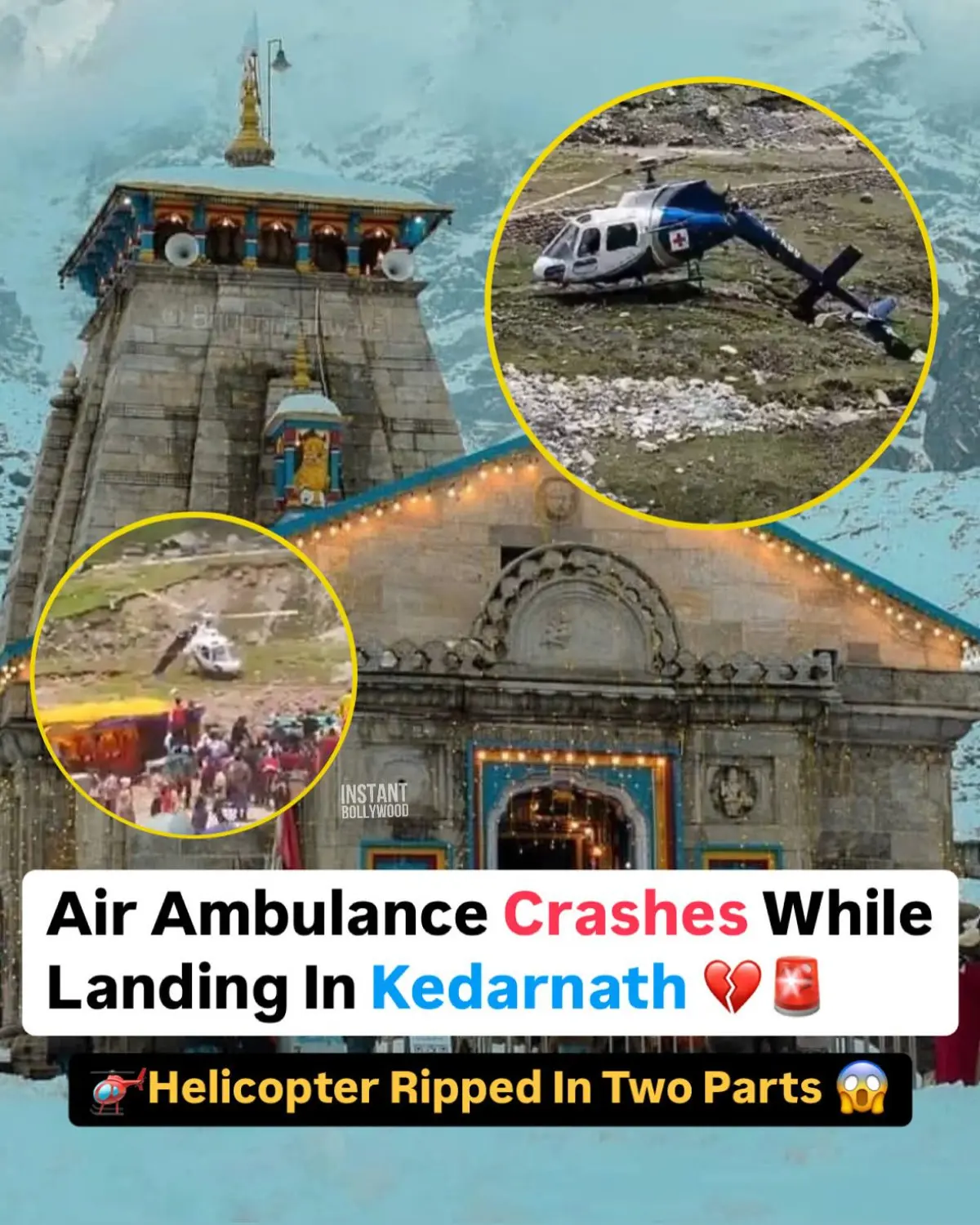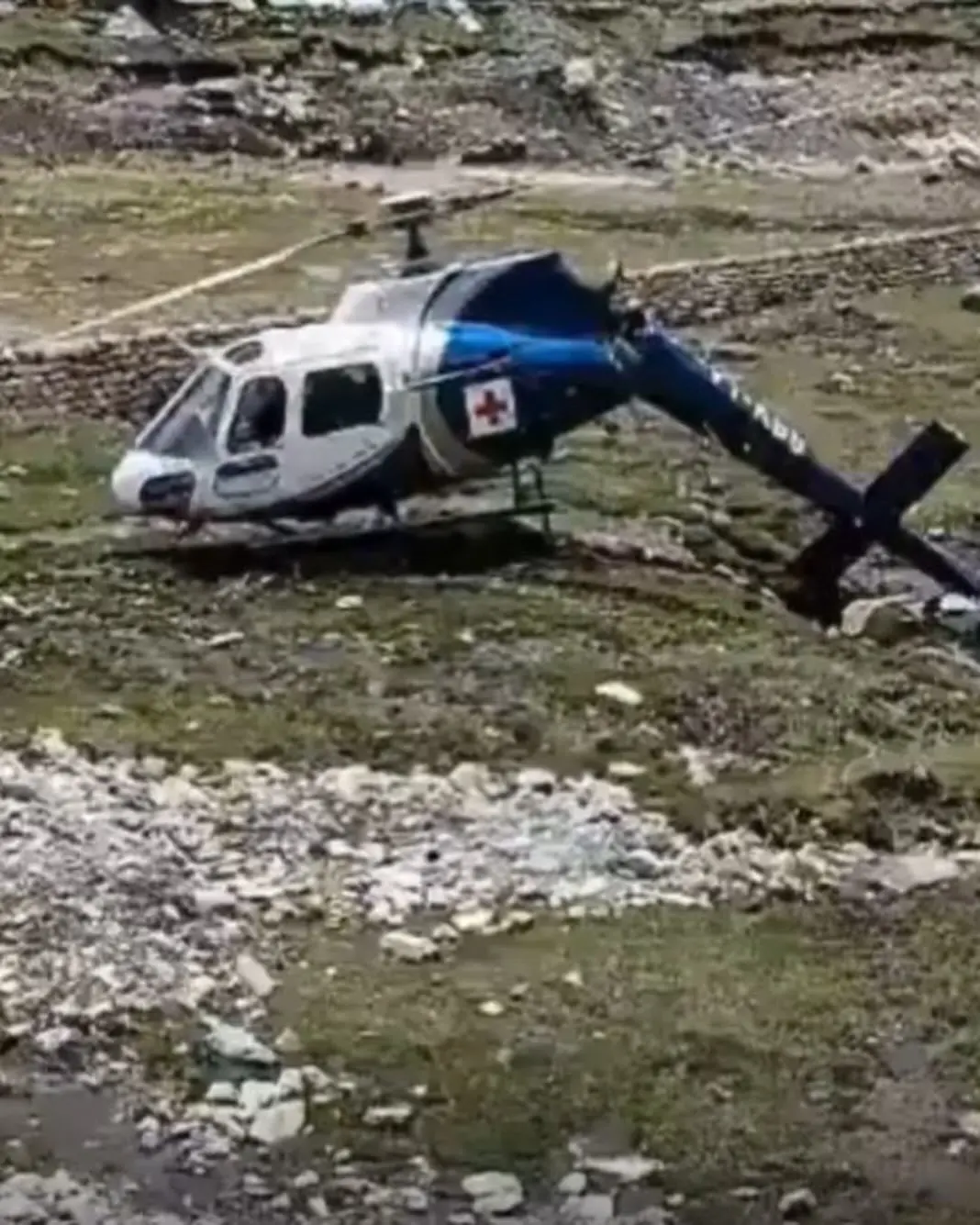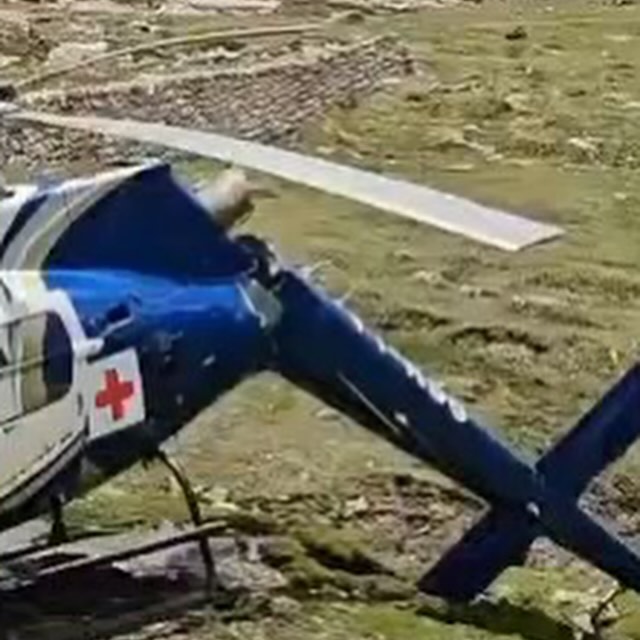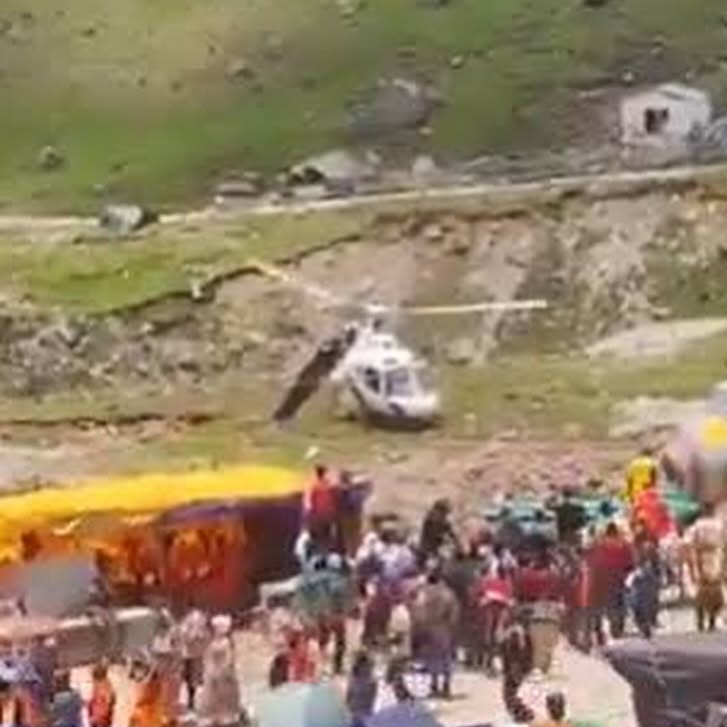Heli Ambulance Makes Emergency Landing In Kedarnath
Rescue in Kedarnath turns perilous as technical snag forces swift emergency landing today.

Image: Instagram
On Saturday, an intense rescue mission in the sacred region of Kedarnath took a dramatic turn when a heli ambulance was forced to execute an emergency landing. The aircraft, operated by AllMS Rishikesh, had been en route to rescue a pilgrim suffering from respiratory distress when a technical snag in the tail rotor jeopardized the mission. The quick thinking of the pilot and the calm actions of the rescue team ensured that all three people on board narrowly escaped a potentially disastrous outcome.
Emergency Landing In Kedarnath
As the heli ambulance approached the rugged terrain near Kedarnath, the technical failure became evident. According to District Tourism Development Officer Rahul Chaubey, the tail rotor of the aircraft suddenly broke down, leaving the pilot with no alternative but to initiate an emergency descent. With precious minutes ticking by and the pilgrim’s condition worsening due to respiratory distress, the decision to land immediately was both critical and life-saving.
The incident, which has since raised concerns about the reliability of such specialized rescue operations in challenging terrains, was captured in real-time by Instant Bollywood on Instagram. The official post (https://www.instagram.com/p/DJwOUFNt9SO/) provided snapshots of the aerial vehicle against the breathtaking yet unforgiving backdrop of the Himalayas, emphasizing both the beauty and the peril inherent in such rescue missions.
A Technical Glitch Amid A Critical Rescue
In rescue operations, every second counts—especially when the mission involves saving a life in an area as remote as Kedarnath. The helicopter, tasked with a high-stakes mission, encountered a mechanical failure that could have ended very differently. The tail rotor’s malfunction not only disrupted the aircraft’s ability to maintain directional control but also forced the crew to reassess their landing strategy on the fly.
District Tourism Development Officer Rahul Chaubey explained, “During the rescue, we experienced a technical snag with the tail rotor. This malfunction required the pilot to execute an emergency landing. Fortunately, the quick decisions made by the crew ensured that everyone on board safely survived the ordeal.” His statement has provided much-needed clarity on the sequence of events during the rescue. Despite the gravity of the situation, authorities confirmed that no lives were lost, and the gravely ill pilgrim was stabilized following the incident.
Swift Response And Local Support
Local rescue teams, well-versed in the risks associated with operating in the mountainous terrains of Kedarnath, were on high alert once the emergency landing was executed. The area, known for its harsh weather and unpredictable flying conditions, demands precision and rapid action in emergencies. Emergency response teams were quick to mobilize, ensuring that the helicopter and its occupants received immediate attention.
This incident has sparked discussions about the technical readiness of rescue helicopters in regions that require rapid interventions. It has reminded both local authorities and rescue organizations of the constant need for rigorous maintenance checks and updated training programs for pilots operating under extreme circumstances. With the region receiving thousands of pilgrims annually, the efficiency and reliability of rescue missions remain paramount.
The Importance Of Rescue Operations In Remote Areas
The episode in Kedarnath is a potent reminder of the challenges faced by rescue services in remote, difficult-to-reach locations. Often, these areas require specialized equipment, and any malfunction can have serious, even fatal consequences. The AllMS helicopter, typically a reliable asset, found itself in a precarious situation that underscored the unpredictable nature of emergency operations.
The incident not only highlights the harsh realities of the rescue missions in these terrains but also stresses the value of human expertise and rapid response. Pilots and technicians working behind the scenes are trained to manage such crises, and their professionalism was clearly evident on that fateful Saturday. The successful emergency landing has been viewed by many as a testament to the rigorous training and unwavering commitment of the rescue personnel.
Furthermore, the emotional toll on both the rescuers and the family of the pilgrim has brought to focus the inherent dangers of working in such life-and-death situations. In a terrain where nature’s challenges meet the vulnerabilities of human-made technology, every mission becomes a race against time.
Looking Forward: Safety And Reliability Enhancements
In the wake of the incident, local authorities and rescue organizations are being urged to review existing safety protocols and maintenance schedules for rescue vehicles. Experts suggest that regular technical audits and enhancements in pilot training could greatly reduce the risks associated with emergency operations. As Kedarnath continues to attract a large number of pilgrims, ensuring the safety and reliability of rescue missions remains a top priority.
Social media reactions have been mixed, with many expressing relief that all occupants were unharmed while others questioning the preparedness of the rescue services. The official Instagram post by Instant Bollywood has further amplified discussions about the operational challenges in remote areas, serving as both a visual and narrative record of the incident.
While questions about technical glitches may linger, the swift actions of the pilot and the coordinated response by local rescue teams have reinforced public trust in the emergency services. This incident stands as a stark reminder of the delicate balance between human intervention and mechanical dependability, urging all stakeholders to invest in improvements that safeguard lives in future rescue attempts.
In the end, the Kedarnath episode not only underscores the inherent risks in high-altitude rescue missions but also celebrates the extraordinary bravery and quick thinking that turned a potentially tragic event into a narrow escape.
The resilient spirit of the rescue teams, combined with their technical competency, has ensured that another life was saved in one of India’s most challenging terrains, marking a significant moment in the ongoing dialogue about the safety of emergency rescue operations in remote regions.
Read full bio of Glendon Moss






















